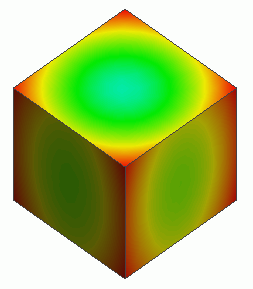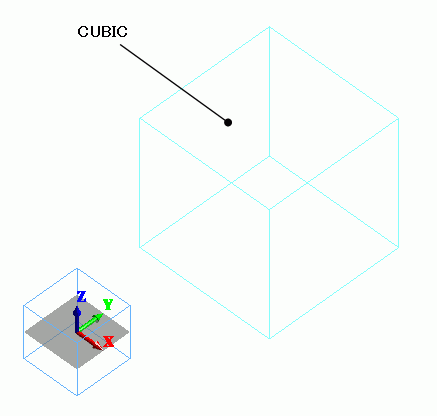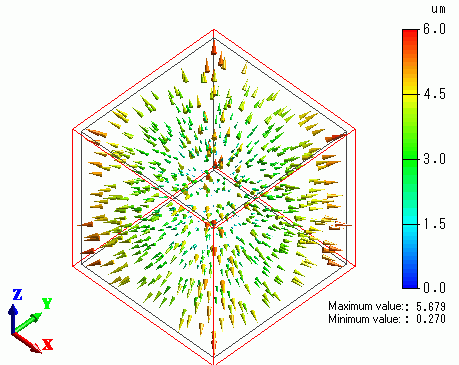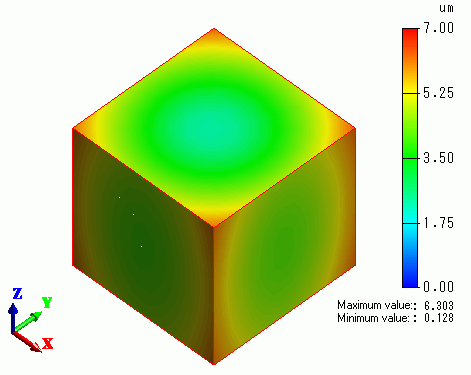
CAE Software【Femtet】Murata Software Co., Ltd.

Example17 Material with Anisotropic Coefficient of Expansion

General
-
Rutile has the anisotropic coefficient of expansion. The deformation under thermal load is solved.
-
The deformation, the displacement and the mechanical stress are solved.
-
Unless specified in the list below, the default conditions will be applied.
Analysis Space
|
Item |
Settings |
|
Analysis Space |
3D |
|
Model unit |
mm |
Analysis Conditions
The temperature is applied evenly on the model.
Opt for the thermal load in the analysis condition, and set the reference temperature and the reached temperature.
There is no need to couple with the thermal analysis [Watt].
|
Item |
Settings |
|
Solvers |
Mechanical Stress Analysis [Galileo] |
|
Analysis Type |
Static analysis |
|
Options |
Select “Thermal load”. |
The Step/Thermal Load tab is set as follows.
|
Tab |
Setting Item |
Settings |
|
Step/Thermal Load |
Reference temperature |
25[deg] |
|
Step/Reached Temperature Setting |
Step 1: 85[deg] |
Model
The model is a cubic solid body.
Anisotropic coefficient of expansion is set on it.

Body Attributes and Materials
|
Body Number/Type |
Body Attribute Name |
Material Name |
||||||
|
0/Solid |
CUBIC |
301_Quartz *
Coefficient of Expansion **
|
* Available from the Material DB
** Anisotropy is set on the “Direction” tab. The default setting is Z direction.
Boundary Conditions
N/A
Results
The vectors of displacement are shown below. The color scale indicates the magnitude of the displacement.

The gradation contour of the displacement is shown below.


